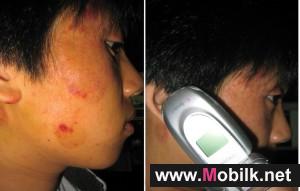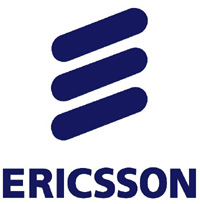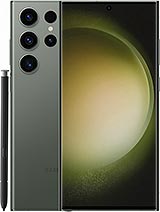Cell Phones Linked to Skin Allergies
Cell phone use has been linked to all sorts of health problems from male infertility to cancer. Now, doctors are seeing increasing numbers of people complaining of unexplained rashes that show up on the ears and cheeks. Doctors are advised to be on alert for a skin allergy caused by too much mobile phone use, the British Association of Dermatologists said this week.
Citing published studies, the group said that a red or itchy rash—now known as “mobile phone dermatitis”—affects those people who, after spending long periods of time on mobile phones, develop an allergic reaction to the phone’s nickel surface. “It is worth doctors bearing this condition in mind if they see a patient with a rash on the cheek or ear that cannot otherwise be explained,” the British Association said. The British group noted that many doctors were unaware mobile phones could cause such a reaction.
“In mobile phone dermatitis, the rash would typically occur on the cheek or ear, depending on where the metal part of the phone comes into contact with the skin,” the group said in a statement. “In theory it could even occur on the fingers if you spend a lot of time texting on metal menu buttons.” Nickel, which is a common metal found in a wide variety of consumer products, including cell phones, is also one of the most common causes of allergic contact dermatitis, according to United States’ Mayo Clinic. Meanwhile, Lionel Bercovitch of Brown University in Providence, Rhode Island and colleagues tested 22 popular handsets earlier this year, sampling phones from eight different manufacturers. The group found nickel in 10 of the devices.
Most recently, researchers from the Cleveland Clinic warned that cell phone use, including hands-free devices—can affect male fertility and warned users to ensure that the devices are not kept in proximity to their testicles. Because men who use hand-free cell phone devices tend to keep the phones in their pants pocket or clipped to the waist belts when the phones are in talk mode, they may be exposing their testicles to damaging radiofrequency electromagnetic waves, explains Ashok Agarwal, PhD, head of the andrology laboratory and the director of the Center for Reproductive Medicine at the Glickman Urologoical and Kidney Institute at the Cleveland Clinic in Ohio.
Also, Dr. Ronald Herberman, director of the University of Pittsburgh Cancer Institute and UPMC Cancer Centers, who is best known for having made headlines recently when he issued a staff advisory on the potential risks of cell phone use, is looking to create a research project focusing on long-term cell phone users. “Recently I have become aware of the growing body of literature linking long-term cell phone use to possible adverse health effects, including cancer,” Herberman wrote in the memo. Heberman’s suggestions includ limiting exposure to electromagnetic radiation emitted by cell phones, such as shortening the length of conversations and distancing cell phones from one’s head by text messaging or using headsets or speakerphones; he recommended children not use cell phones except in emergencies.
Research & Studies
Making Information and Communication Technology (ICT) a central part of efforts to decrease CO₂ (Carbon Dioxide) output has the potential to reduce..
Research & Studies
New research from Ericsson (NASDAQ:ERIC) has suggested that mobile penetration is outpacing births rates across the Middle East. According to the..
Research & Studies
Thanks to mobile broadband, an ever-increasing number of people and devices are connected. This phenomenon provides more opportunities for operators,..

 Vodafone Oman
Vodafone Oman Emirates Telecom
Emirates Telecom  Ooredoo Om
Ooredoo Om Ooredoo Qa
Ooredoo Qa stc Bahrain
stc Bahrain Orange Egypt
Orange Egypt Mobily
Mobily Zain Jo
Zain Jo omantel
omantel STC
STC Emirates Du
Emirates Du Asiacell
Asiacell Etisalat Egypt
Etisalat Egypt  Telecom Egypt
Telecom Egypt jawwal
jawwal Orange Jo
Orange Jo Umniah
Umniah Zain Sa
Zain Sa Bahrain Batelco
Bahrain Batelco Zain Bh
Zain Bh Wataniya palestine
Wataniya palestine Kuwait Viva
Kuwait Viva  Zain Kw
Zain Kw Vodafone Qa
Vodafone Qa MTN Syria
MTN Syria Syriatel
Syriatel Sabafon
Sabafon Zain Iq
Zain Iq MTN Yemen
MTN Yemen Ooredoo Kw
Ooredoo Kw Vodafone Egypt
Vodafone Egypt  Samatel
Samatel Huawei
Huawei Samsung
Samsung MOTOROLA
MOTOROLA Alcatel
Alcatel Lenovo
Lenovo LG
LG Nokia
Nokia Sony Ericsson
Sony Ericsson HTC
HTC BlackBerry
BlackBerry Siemens
Siemens Acer
Acer Sony
Sony Asus
Asus VK
VK APPLE
APPLE BenQ-Siemens
BenQ-Siemens Sagem
Sagem Eten
Eten HP
HP Panasonic
Panasonic Amoi
Amoi Toshiba
Toshiba Sharp
Sharp Sonim
Sonim Bird
Bird Mitac
Mitac Philips
Philips Pantech
Pantech Vertu
Vertu Micromax
Micromax Maxon
Maxon Haier
Haier I-mate
I-mate Gigabyte
Gigabyte I-mobile
I-mobile Kyocera
Kyocera BenQ
BenQ Microsoft
Microsoft Telit
Telit Connect
Connect Sendo
Sendo SEWON
SEWON Mitsubishi
Mitsubishi DELL
DELL Thuraya
Thuraya NEC
NEC Qtek
Qtek Be
Be Neonode
Neonode Bosch
Bosch MWG
MWG Palm
Palm XCute
XCute Fujitsu Siemens
Fujitsu Siemens WND
WND INQ
INQ Innostream
Innostream O2
O2 Benefon
Benefon Google
Google


















